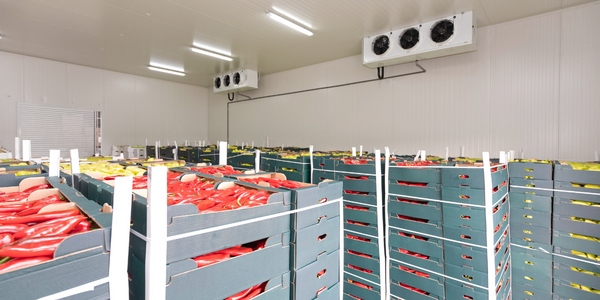Customer Company Size
Mid-size Company
Region
- America
Country
- United States
Product
- KeepTruckin App
Tech Stack
- Mobile Application
Implementation Scale
- Enterprise-wide Deployment
Impact Metrics
- Productivity Improvements
- Cost Savings
Technology Category
- Functional Applications - Fleet Management Systems (FMS)
Applicable Industries
- Transportation
Applicable Functions
- Logistics & Transportation
Use Cases
- Fleet Management
- Remote Asset Management
Services
- System Integration
About The Customer
DDI Transportation Inc. is a truckload and intermodal company based in Springfield, MA. The company operates with a fleet size of 170 and uses a combination of company drivers and owner-operators. DDI Transportation had been using a well-known on-board computer with their company drivers for years. When the ELD mandate was announced, they were faced with the decision of whether to expand the existing provider’s ELD option to their owner-operators or explore other options in the market.
The Challenge
DDI Transportation was faced with a decision following the announcement of the ELD mandate. They had been using a well-known on-board computer with their company drivers for years. The challenge was whether to expand the existing provider’s ELD option to their owner-operators or explore other options in the market. Some of their owner-operators had already started using the KeepTruckin app and were sending logs to the company. However, not all owner-operators were enthusiastic about the change, especially those who had been using paper logs for years.
The Solution
DDI Transportation decided to adopt the KeepTruckin app for their owner-operators. The decision was influenced by some of their owner-operators who had already started using the app and were sending logs to the company. The KeepTruckin app was easy to use, even for a driver with 40 years of experience using paper logs and no experience with a tablet or smartphone. The back office staff also found the app useful as it allowed them to see the remaining drive time, break requirements, and 14 and 70-hour clocks in a visually appealing format, eliminating the need for calculations.
Operational Impact

Case Study missing?
Start adding your own!
Register with your work email and create a new case study profile for your business.
Related Case Studies.

Case Study
Airport SCADA Systems Improve Service Levels
Modern airports are one of the busiest environments on Earth and rely on process automation equipment to ensure service operators achieve their KPIs. Increasingly airport SCADA systems are being used to control all aspects of the operation and associated facilities. This is because unplanned system downtime can cost dearly, both in terms of reduced revenues and the associated loss of customer satisfaction due to inevitable travel inconvenience and disruption.

Case Study
IoT-based Fleet Intelligence Innovation
Speed to market is precious for DRVR, a rapidly growing start-up company. With a business model dependent on reliable mobile data, managers were spending their lives trying to negotiate data roaming deals with mobile network operators in different countries. And, even then, service quality was a constant concern.

Case Study
Digitize Railway with Deutsche Bahn
To reduce maintenance costs and delay-causing failures for Deutsche Bahn. They need manual measurements by a position measurement system based on custom-made MEMS sensor clusters, which allow autonomous and continuous monitoring with wireless data transmission and long battery. They were looking for data pre-processing solution in the sensor and machine learning algorithms in the cloud so as to detect critical wear.

Case Study
Cold Chain Transportation and Refrigerated Fleet Management System
1) Create a digital connected transportation solution to retrofit cold chain trailers with real-time tracking and controls. 2) Prevent multi-million dollar losses due to theft or spoilage. 3) Deliver a digital chain-of-custody solution for door to door load monitoring and security. 4) Provide a trusted multi-fleet solution in a single application with granular data and access controls.

Case Study
Vehicle Fleet Analytics
Organizations frequently implement a maintenance strategy for their fleets of vehicles using a combination of time and usage based maintenance schedules. While effective as a whole, time and usage based schedules do not take into account driving patterns, environmental factors, and sensors currently deployed within the vehicle measuring crank voltage, ignition voltage, and acceleration, all of which have a significant influence on the overall health of the vehicle.In a typical fleet, a large percentage of road calls are related to electrical failure, with battery failure being a common cause. Battery failures result in unmet service agreement levels and costly re-adjustment of scheduled to provide replacement vehicles. To reduce the impact of unplanned maintenance, the transportation logistics company was interested in a trial of C3 Vehicle Fleet Analytics.

Case Study
3M Gains Real-Time Insight with Cloud Solution
The company has a long track record of innovative technology solutions. For example, 3M helps its customers optimize parking operations by automating fee collection and other processes. To improve support for this rapidly expanding segment, 3M needed to automate its own data collection and reporting. The company had recently purchased the assets of parking, tolling, and automatic license plate reader businesses, and required better insight into these acquisitions. Chad Reed, Global Business Manager for 3M Parking Systems, says, “With thousands of installations across the world, we couldn’t keep track of our software and hardware deployments, which made it difficult to understand our market penetration.” 3M wanted a tracking application that sales staff could use to get real-time information about the type and location of 3M products in parking lots and garages. So that it could be used on-site with potential customers, the solution would have to provide access to data anytime, anywhere, and from an array of mobile devices. Jason Fox, Mobile Application Architect at 3M, upped the ante by volunteering to deliver the new app in one weekend. For Fox and his team, these requirements meant turning to the cloud instead of an on-premises datacenter. “My first thought was to go directly to the cloud because we needed to provide access not only to our salespeople, but to resellers who didn’t have access to our internal network,” says Fox. “The cloud just seemed like a logical choice.”







